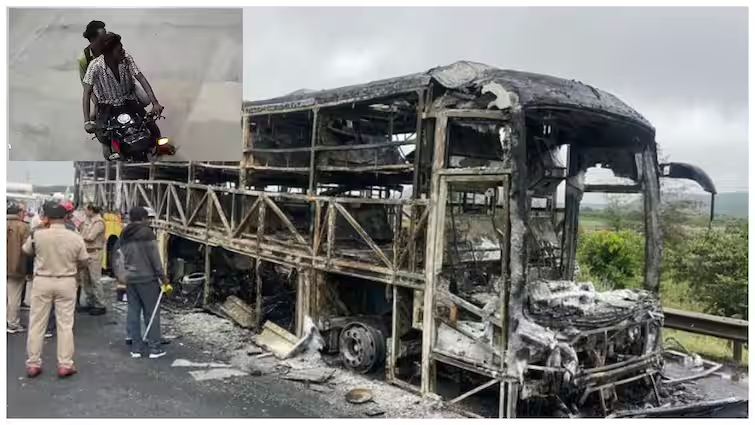Bus batteries sparked Andhra bus fire, smartphones made it deadlier
A private sleeper bus traveling from Hyderabad to Bengaluru collided with a two-wheeler in Kurnool district, Andhra Pradesh, on October 24–25, 2025, triggering a catastrophic fire that killed 20 people (19 passengers and the two-wheeler rider). Forensics and initial probe say two 12 kV batteries in the bus exploded and a large consignment of 234 smartphones (with lithium-ion cells) on board accelerated the blaze, turning a deadly accident into a full inferno. Authorities have taken the bus driver and additional driver into custody and are carrying out DNA identification of the charred victims.
- A private sleeper bus was traveling overnight from Hyderabad toward Bengaluru with 44 passengers on board.
- A two-wheeler ahead of the bus skidded, apparently struck a divider and then came to rest; video shows the two-wheeler driving recklessly before the incident. The biker later filled fuel at a nearby petrol pump — footage of this stop circulated online.
- The bus ran over the two-wheeler, which became trapped beneath the bus and its fuel tank burst. Evidence shows the burst happened near the bus’s main exit door.
- A fierce fire started and spread rapidly. Forensic teams later reported two 12 kV batteries on the bus exploded, and the presence of a large consignment of 234 smartphones likely made the blaze far worse. Twenty people died — 19 passengers plus the two-wheeler rider.
Five FAQs
Q1: Did the smartphones themselves cause the fire?
A1: The probe suggests smartphones did not cause the initial ignition, but their lithium-ion batteries likely accelerated fire spread once the blaze started. The immediate ignition was linked to a fuel tank burst and later explosions of the bus’s 12 kV batteries
Q2: Is it legal to carry large consignments of electronics on passenger buses?
A2: Regulations vary by region and carrier. Carrying small personal devices is normally permitted; bulk consignments intended for trade should typically be transported as cargo under logistics rules with appropriate packaging and declarations. The presence of 234 phones suggests commercial carriage that demands stricter handling.
Q3: What makes lithium-ion batteries dangerous on vehicles?
A3: Lithium-ion batteries can experience thermal runaway when damaged or overheated, releasing flammable gases and heat. In enclosed spaces, multiple cells failing can produce intense heat and smoke and may cause secondary ignition or explosions.
Q4: What should bus operators change immediately?
A4: Reassess cargo policies (no undelared bulk battery/electronics shipments), reposition battery packs away from exits, install fire detection/suppression systems, use fire-resistant interior materials, and ensure crew emergency training and tools are standard.
Q5: How can passengers protect themselves on long-distance buses?
A5: Be aware of exits, avoid carrying loose spare batteries in checked luggage, keep essential electronics on your person, and sit nearer to exits if possible. In an emergency, act quickly and follow crew instructions.




